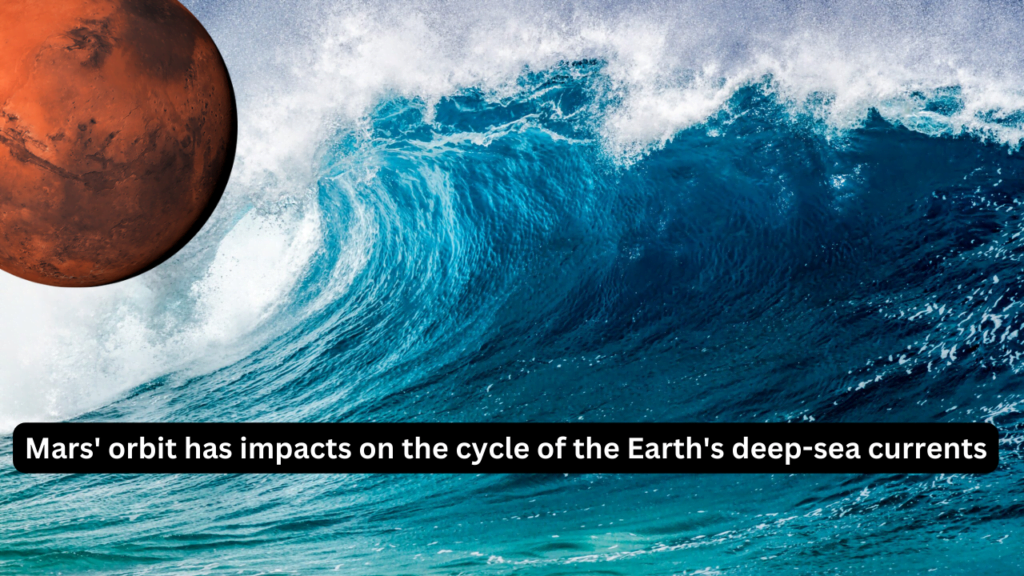According to a recent geological research, Earth’s climate warms as a result of Mars’ gravitational field drawing Earth closer to the sun over millions of years
Based on geological data gathered from hundreds of locations worldwide and dating back over 65 million years, it seems that deep-sea currents have fluctuated in strength throughout time. This phenomenon, which occurs once every 2.4 million years, is referred to as a “astronomical grand cycle.”

The strongest currents, also referred to as “giant whirlpools” or eddies, have the potential to reach the bottom at the lowest point in the ocean called abyss.
According to research published in the journal Nature Communications on Tuesday, March 12, these strong currents then chip away at the big particles of silt that collect during calmer stages in the cycle.
The study discovered that these cycles just so happen to line up with the known time of Earth’s and Mars’ gravitational interactions as they orbit the sun.
Related: Unprecedented Climate Challenges: Rising North Atlantic Ocean Temperatures Beyond 5.4°F
Mars’ Gravitational Influence & Earth’s Ocean Dynamics
Dietmar Müller, a professor of geophysics at the University of Sydney and co-author of the study, said in a statement that “the gravity fields of the planets in the solar system interfere with each other and this interaction, called a resonance, changes planetary eccentricity, a measure of how close to circular their orbits are.”
Due to this resonance, Earth is drawn closer to the sun by Mars’ gravitational pull over a 2.4-million-year period, increasing exposure to solar radiation and warming the planet’s surface. However, the Earth then drifts backwards.

The new study’s authors studied the sediment buildup on the sea floor over hundreds of millions of years using data from satellites. They discovered that throughout these astronomical cycles, there were gaps in the geological records when material stopped accumulating. As per scientists belief, this phenomenon could be connected to stronger currents in the ocean brought on by higher temperatures brought on by Mars’ gravitational pull on Earth.
These results confirm the theory that the Red Planet, like passing stars and other celestial objects, affects Earth’s temperature. Nonetheless, the authors stressed in the statement that the warming impact that has been found is unrelated to global warming caused by greenhouse gas emissions from human activity.
In spite of this, the results, albeit still theoretical at this point, imply that this cycle may occasionally support parts of the ocean’s deep-water currents in a situation that global warming reduces them, according to the authors.
“We know there are at least two separate mechanisms that contribute to the vigor of deep-water mixing in the oceans,” Müller continued. Müller identified the Atlantic Meridional Overturning Circulation (AMOC) as one of these processes. The warm water from the tropics is brought to the Northern Hemisphere by this, which functions as an ocean “conveyor belt,” transferring heat deep into the ocean.
Given that some scientists believe the AMOC may collapse in the next decades, it’s likely that the ventilation brought on by deep ocean eddies would be advantageous.
Adriana Dutkiewicz, main study author and sedimentologist at the University of Sydney, said in the statement, “Our deep-sea data spanning 65 million years suggests that warmer oceans have more vigorous deep circulation.” “This will potentially keep the ocean from becoming stagnant even if Atlantic meridional overturning circulation slows or stops altogether.”






